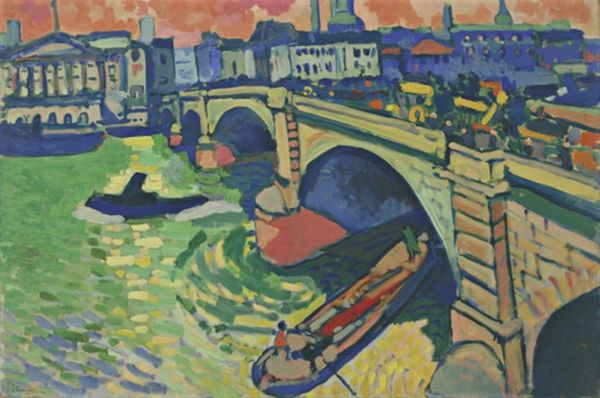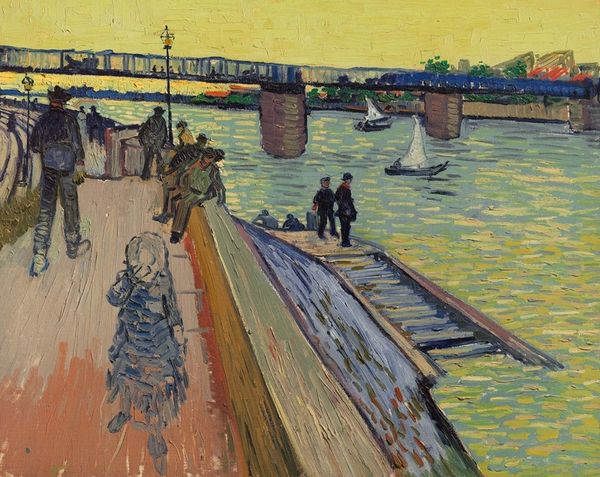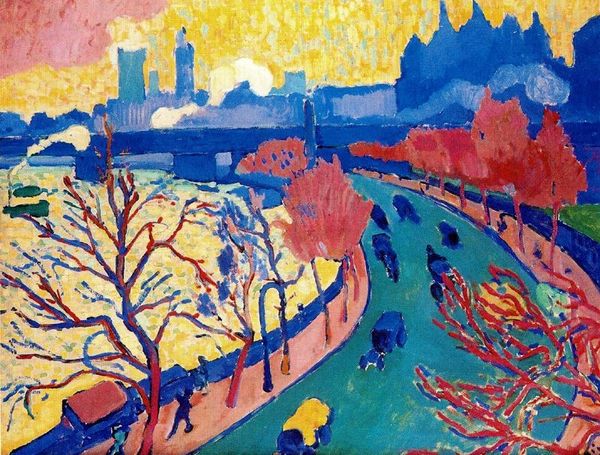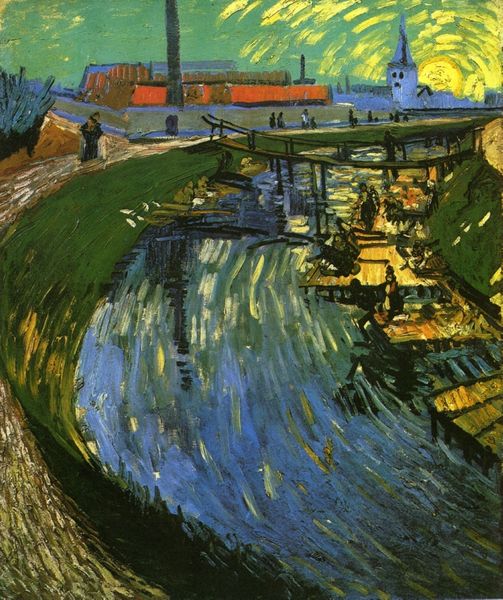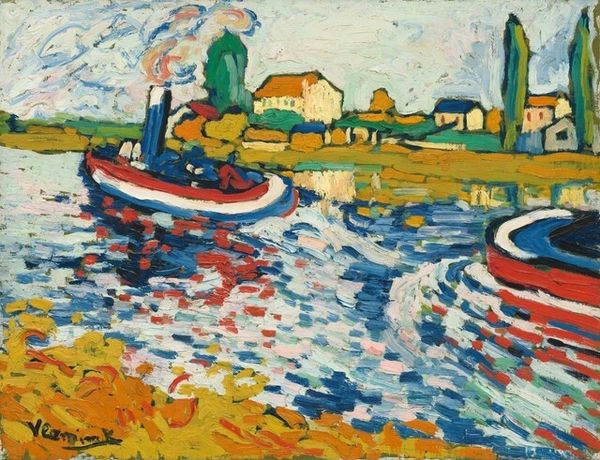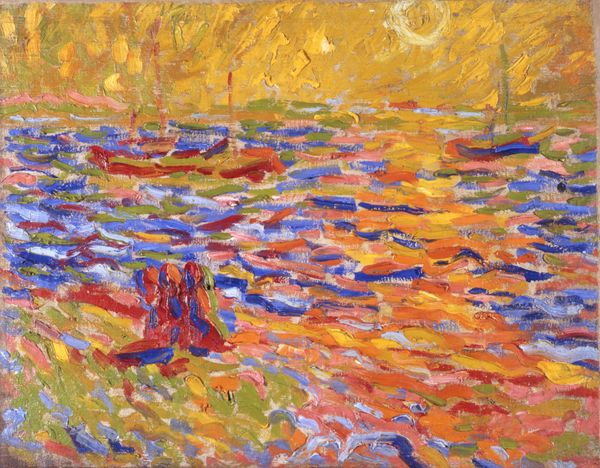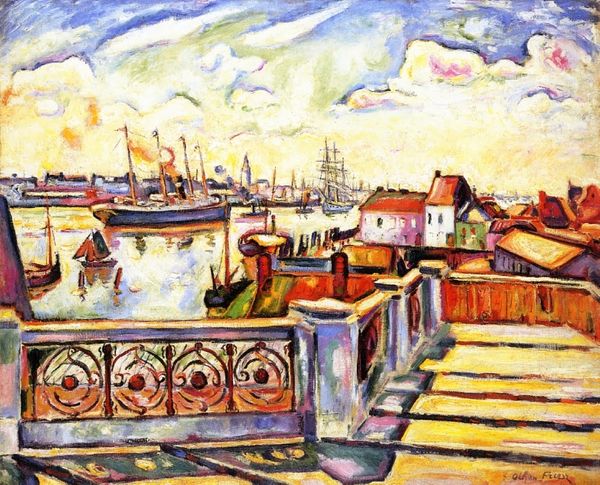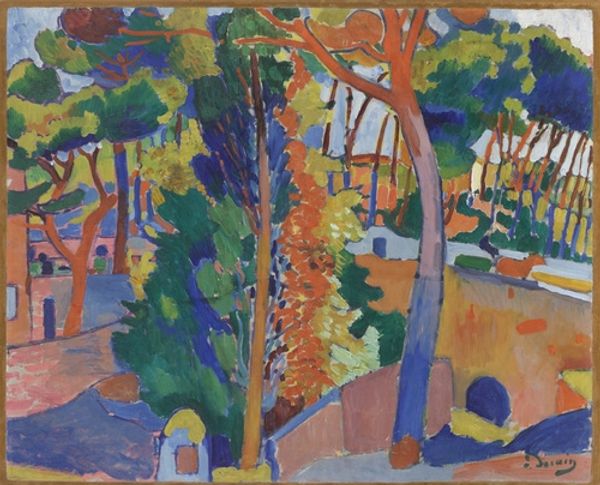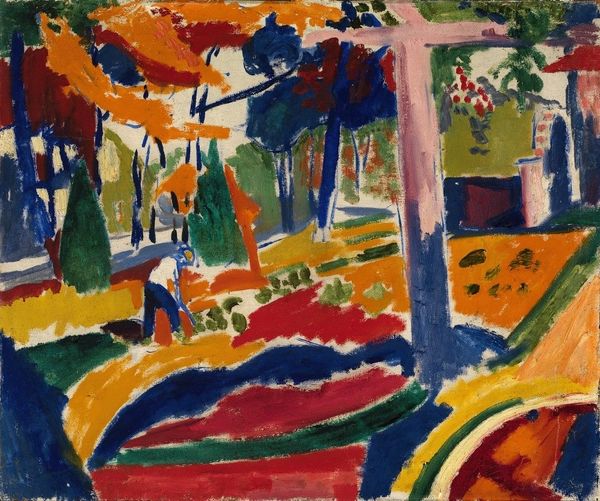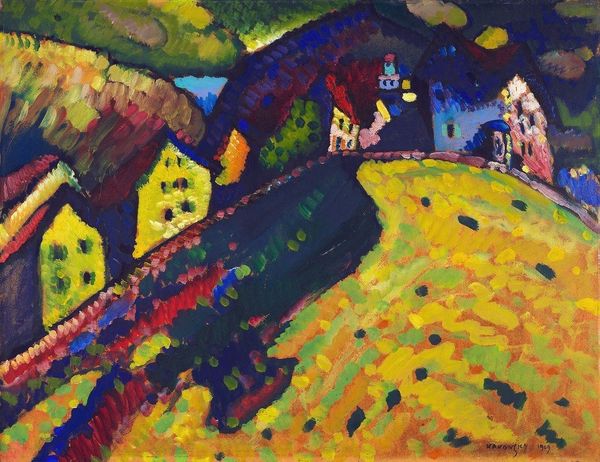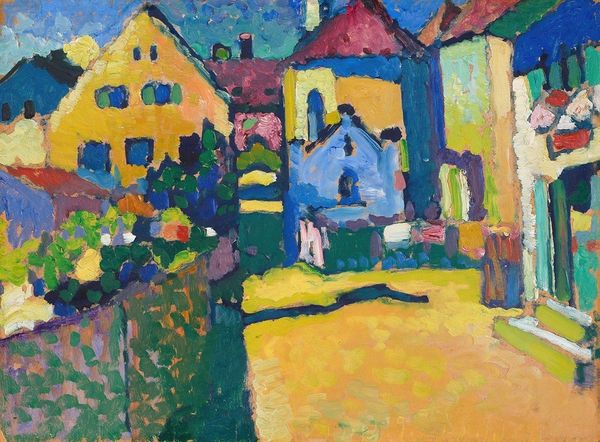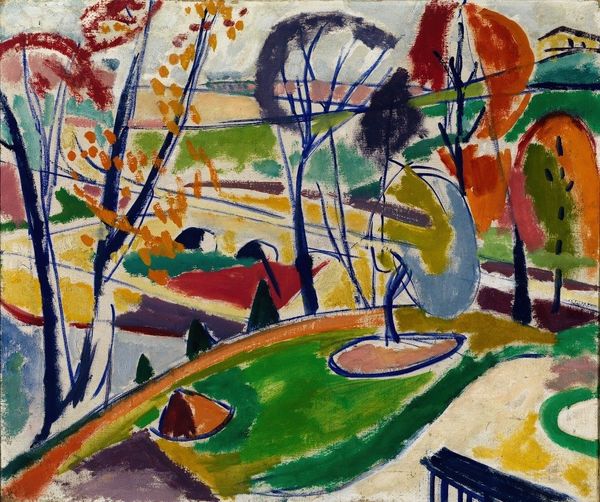
Copyright: Public domain US
Editor: This is André Derain's "Charing Cross Bridge, London," painted in 1906. It's an oil painting, and what strikes me first is the raw intensity of the colors; it almost feels divorced from reality. What can you tell me about it? Curator: For me, the focus rests primarily on the *means* of its making. Notice the overt brushstrokes – Derain isn't trying to hide the labor, the physical act of applying the paint. The choice of such vibrant, unnatural colors becomes a deliberate comment on industrialization. How are these colours reflecting or opposing society and technological advances? Editor: So, you are suggesting that the bright color palette comments on something other than aesthetics? Curator: Exactly! Think about it: this is early 20th-century London. It was a hub of manufacturing and industry. The bridge itself is a symbol of progress, built using iron and steel, materials central to the era’s social fabric. Now, observe the paint—does its application and quality reject academic aesthetics? How do we view traditional expectations? Editor: That's a compelling reading. So instead of just depicting London, he's using the materials and process to engage with what London *represented* at the time? Curator: Precisely. He's manipulating the materials and the production to critique and represent a new, modern and rapidly changing social landscape. Derain isn't just painting a pretty picture; he’s using the materials and production process to show us an image of what society makes possible. Editor: I see! So, paying attention to how it was made helps us to think about why it was made. I didn’t catch that. Thank you! Curator: My pleasure! It highlights the artist's labor and gives viewers like you agency over deciding whether that landscape benefits society as a whole.
Comments
No comments
Be the first to comment and join the conversation on the ultimate creative platform.
